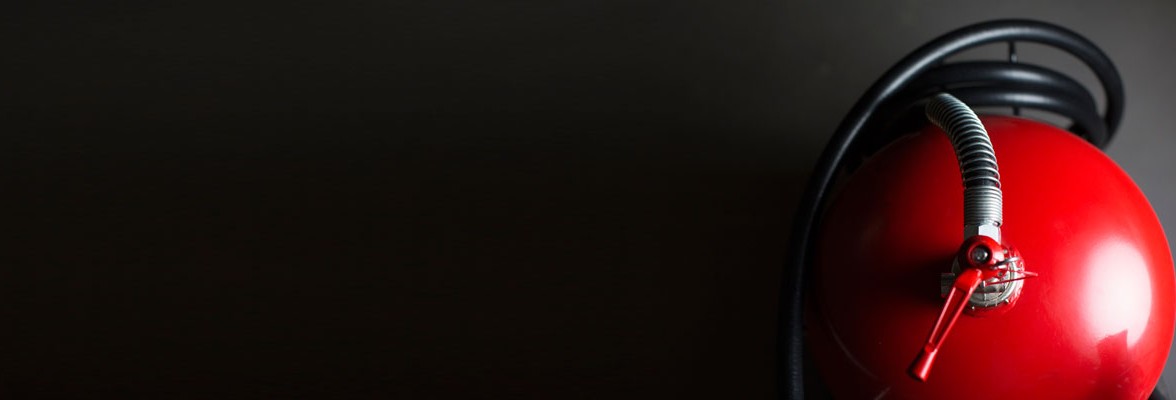YOUR CART
- No products in the cart.
Subtotal:
$0.00


Fire extinguishers are the first line of defense against small fires in residential and commercial premises, preventing extensive damage and safety risks. Having fire extinguishers ensures compliance with safety regulations, so most businesses have them installed, but only about 52% have effectively trained employees on the correct use.
Many people assume using a fire extinguisher is as simple as pointing the nozzle at a fire. However, there are four steps to use this equipment correctly and effectively. You can memorize a simple acronym for using a fire extinguisher to help you remember how to contain a blaze without endangering yourself and others.
The PASS acronym defines the correct and universally accepted way to use a fire extinguisher. It stands for pull, aim, squeeze and sweep. Stay calm and remember these steps to safely put out a fire.
You should only use a fire extinguisher for small, controllable blazes. Do not pick up a fire extinguisher unless you’re confident you know how to use it correctly. When in doubt, sound the alarm, immediately exit the building to a designated evacuation point and call for professional emergency help.
Follow the steps in the PASS fire extinguisher acronym to put out a fire you feel certain you can combat yourself.

The first step in using a fire extinguisher is removing the safety pin on the handle at the top. Normally, this pin locks down the handle to prevent accidental release of the extinguishing agent. Pulling it out allows the handle to move so you can release the firefighting agent.
Knowing where to point the hose determines how quickly and easily you can put out the fire. Always aim at the base of the flames, where the most oxygen reacts with the fuel source. Directing the hose toward the top portion of the fire may allow it to continue burning and spreading.
For safety, do not hold the hose too close to its nozzle — the extinguishing agent is cold enough to burn your hand.
Squeezing the extinguisher handle releases the pressurized extinguishing agent, which is typically a powder, foam or liquid that suffocates the fire to prevent contact between combustive agents and fuel. Press the handle steadily to cover the fire evenly. Let it go to stop discharging the extinguishing agent.
Finally, sweeping the nozzle hose from side to side spreads the extinguishing agent evenly at the base of the fire, putting it out and preventing reignition by reducing the amount of heat and fuel available. Cover the entire base by sweeping the nozzle until the fire is completely out.
In addition to following the PASS acronym, maintaining a safe distance from the fire protects you if the blaze grows or reignites. You should also point the nozzle away from you and keep your back toward the room’s exit.
Though the PASS mnemonic is easy to remember and follow, people sometimes get overwhelmed in the heat of the moment. Here are some of the most common mistakes people make when following the PASS approach to using a fire extinguisher:
Drilling employees on the PASS technique and other fire safety instructions could save your business someday. Regular practice will ascertain your team members know what to do in a fire, keeping everyone calm as they follow the familiar steps. Here are some tips for developing a fire drill training and evacuation strategy.
Provide hands-on fire extinguisher training as part of your safety plan. Start by explaining the different fire extinguisher ratings and the situations they’re most suitable for. Practice sessions will help people understand the fire extinguisher’s weight, the extinguishing agent’s range and the physical effort required for operation.
Periodically check the fire extinguishers’ gauges to ensure they are ready to use. You should also inspect them regularly, according to the manufacturer’s instructions. Monthly visual examinations can identify any signs of dents, rust and tampering that may affect functioning.
Save time and money today by ordering your fire safety equipment from National Fire Supply. Our comprehensive inventory includes fire extinguishers, fire hoses, restaurant suppression equipment and accessories like signage, gauges and fusible links. Our knowledgeable team is always here to help you choose the appropriate fire safety equipment for the size of your space.
We provide excellent customer service, offer same-day shipping and continued support to ensure your equipment works when you need it. Check out our blog for more fire safety tips, place an order on our website or contact us today for advice on the best fire extinguisher for you.